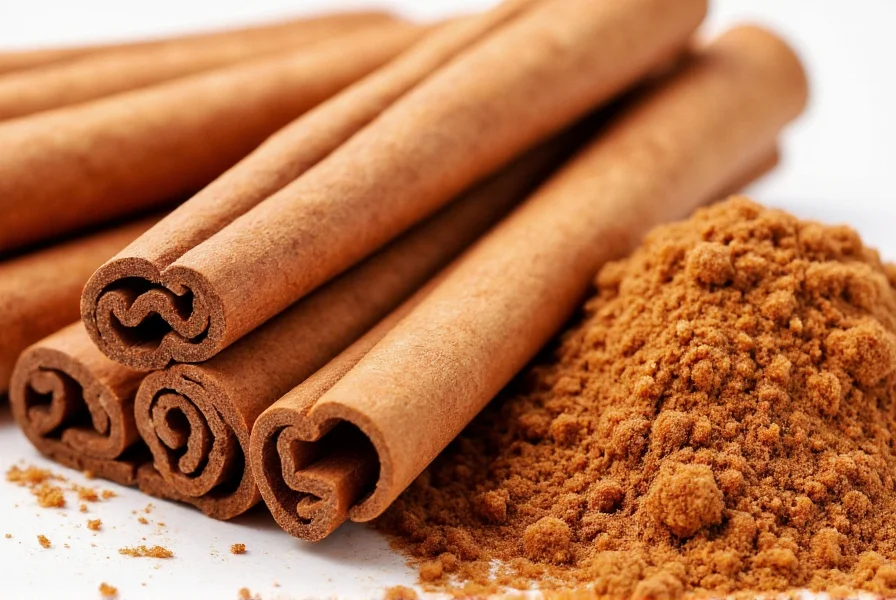One teaspoon (2.6g) of ground cinnamon contains approximately 6 calories, 2.1g carbohydrates, 0.1g protein, 0.1g fat, and 1.5g fiber. It's exceptionally rich in manganese (19% of Daily Value), provides notable calcium (2%) and iron (1%), and contains powerful antioxidants like polyphenols. Ceylon cinnamon offers similar nutritional value with significantly lower coumarin content than the more common Cassia variety.
Understanding the nutritional value of cinnamon helps you maximize its health benefits while avoiding potential risks. This ancient spice isn't just for flavor—it packs a nutritional punch that makes it valuable for daily consumption when used appropriately.
Nutritional Profile of Cinnamon: Beyond Basic Facts
When examining cinnamon nutritional facts per teaspoon, it's essential to recognize that this spice delivers remarkable nutrients despite its small serving size. The USDA FoodData Central database provides the most reliable reference for spice nutrition information, showing that cinnamon's value extends far beyond its carbohydrate content.
| Nutrient | Amount per Teaspoon (2.6g) | % Daily Value |
|---|---|---|
| Calories | 6 | 0% |
| Total Carbohydrate | 2.1g | 1% |
| Dietary Fiber | 1.5g | 5% |
| Sugar | 0.1g | 0% |
| Total Fat | 0.1g | 0% |
| Protein | 0.1g | 0% |
| Manganese | 0.4mg | 19% |
| Calcium | 26mg | 2% |
| Iron | 0.2mg | 1% |
| Vitamin K | 0.6mcg | 1% |
Key Nutrients and Their Health Significance
The standout nutrient in cinnamon is manganese, which plays crucial roles in bone health, metabolism, and antioxidant function. Just one teaspoon provides nearly one-fifth of your daily manganese requirement—a remarkable density for such a small serving.
When comparing ceylon vs cassia cinnamon nutrition, both varieties offer similar nutritional profiles, but Ceylon contains significantly less coumarin—a compound that can cause liver issues in high doses. This makes Ceylon the safer choice for regular consumption, especially for those with liver conditions or taking certain medications.

Antioxidant Powerhouse: Cinnamon's Hidden Strength
Cinnamon ranks among the most antioxidant-rich foods available. Research published in the Journal of Agricultural and Food Chemistry found it contains over 41 different protective compounds, with polyphenols being particularly abundant. These antioxidants combat oxidative stress, potentially reducing inflammation throughout the body.
When evaluating antioxidants in cinnamon spice, studies show it has 40 times more antioxidants than blueberries by weight. This explains why researchers are investigating cinnamon's potential role in managing conditions related to oxidative damage.
Practical Applications: Incorporating Cinnamon Safely
Understanding how much cinnamon should I eat daily is crucial for maximizing benefits while avoiding risks. For Cassia cinnamon (the common grocery store variety), limiting intake to 1-2 teaspoons daily prevents excessive coumarin consumption. Ceylon cinnamon allows for slightly higher consumption—up to 1-2 tablespoons—due to its lower coumarin content.
When considering cinnamon blood sugar regulation effects, multiple studies suggest that 1-6 grams daily (approximately ½ to 2 teaspoons) may help improve insulin sensitivity. However, these effects are modest and shouldn't replace medical treatment for diabetes.

Realistic Expectations: What Science Actually Supports
Despite popular claims about is cinnamon good for weight loss, research shows only modest effects at best. A comprehensive review in Nutrition Reviews concluded that while cinnamon may slightly improve metabolic markers, it's not a significant weight loss aid on its own.
The most well-documented benefits relate to blood sugar management and antioxidant protection. A meta-analysis in the Annals of Family Medicine found that cinnamon supplementation significantly reduced fasting blood glucose levels, though the clinical significance remains modest.
Important Safety Considerations
When discussing cinnamon side effects and safety, the primary concern is coumarin content in Cassia cinnamon. The European Food Safety Authority recommends limiting coumarin intake to 0.1mg per kg of body weight daily. For a 150-pound person, this translates to no more than 1 teaspoon of Cassia cinnamon daily.
Certain populations should exercise particular caution:
- Individuals with liver conditions
- Those taking blood thinners (cinnamon may enhance effects)
- Pregnant women (consult physician before regular consumption)
Maximizing Nutritional Benefits in Your Diet
For those seeking health benefits of cinnamon spice without risks, consider these practical strategies:
- Choose Ceylon cinnamon for regular use
- Add to morning coffee or tea instead of sugar
- Sprinkle on oatmeal or yogurt for natural sweetness
- Use in savory dishes like curries and stews
- Combine with black pepper to enhance absorption of nutrients
When comparing cinnamon vs other spices nutrition, it holds its own against competitors like turmeric and ginger. Each offers unique benefits, making a diverse spice regimen more valuable than focusing on any single spice.
Conclusion: A Spice Worth Including
The nutritional value of cinnamon makes it a worthwhile addition to most diets when consumed responsibly. Its impressive manganese content, antioxidant properties, and potential metabolic benefits offer genuine health advantages. By understanding the differences between varieties and appropriate serving sizes, you can safely incorporate this ancient spice into your daily routine for both flavor and function.










 浙公网安备
33010002000092号
浙公网安备
33010002000092号 浙B2-20120091-4
浙B2-20120091-4